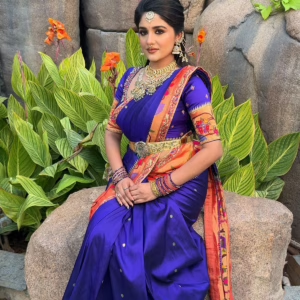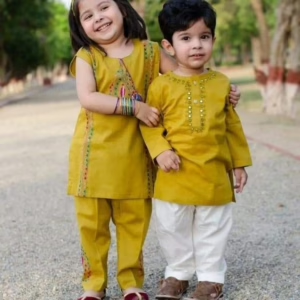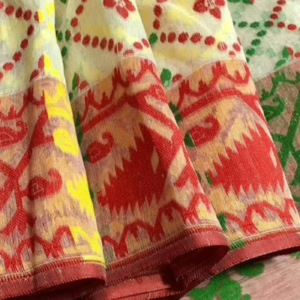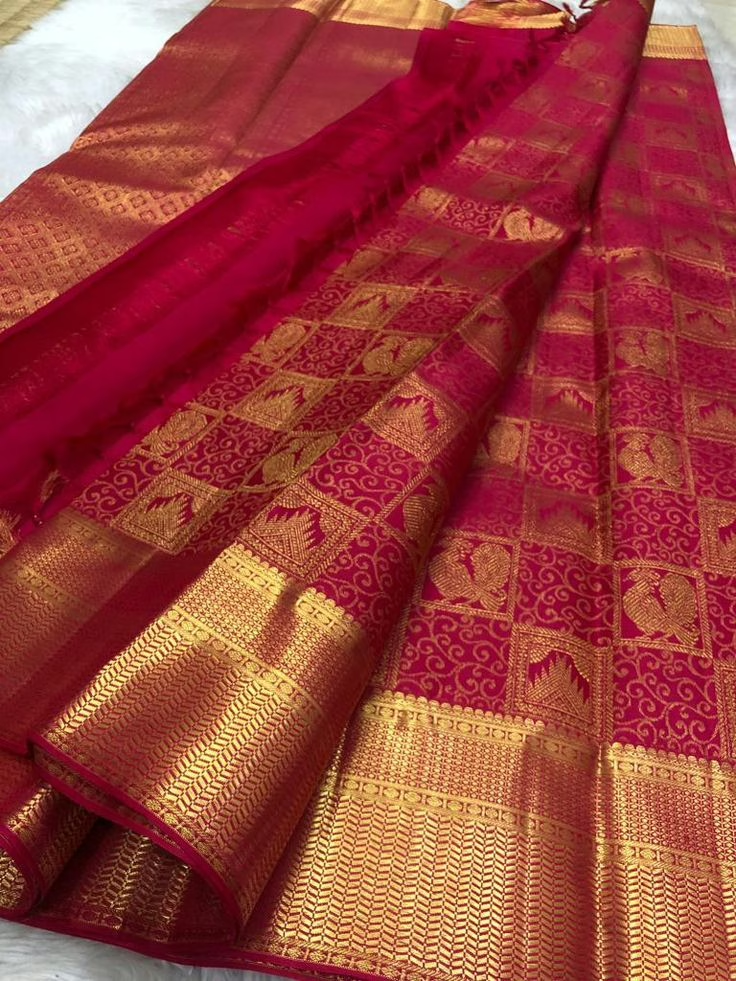
Photo Credits: Pinterest
Get the real deal!
The Kanjeevaram saree is a prized treasure in Indian ethnic wear known for its luxurious appeal, rich zari work, and vibrant colors. Indian women from across India and the world don Kanjeevaram sarees for weddings, festive and special occasions and for most it is a staple in their wardrobe. The Kanjeevaram saree traces its origins to Kanchipuram located in Tamil Nadu. It is weaved from pure Mulberry silk and frequently passed down as valuable heirlooms from one generation to another.
Authentic Kanjeevaram sarees are expensive, so there are many fake versions being sold in the market. If you’re keen on getting a genuine saree for yourself, you must know the ways on how to spot a real from a fake. This post will walk you through 8 steps to identify authentic Kanjeevaram sarees for your wardrobe. So, let’s dive in and find out-
1. Run the “Zari” test!

Photo Credits: Pinterest
Kanjeevaram sarees are known exclusively for their Zari- the silver and gold thread weaved into the fabric. In a real saree, the Zari is woven with silver coated with gold. It is later woven into the fabric with silk threads.
Test
Scratch a small portion of the Zari gently with a pin or rub the thread between two fingers. If you come across a red colored thread underneath it, the piece is fake. In real sarees, after rubbing or scratching the Zari, it appears creamish in color or while.
2. Ask for the Silk Mark tag

Photo Credits: Pinterest
Real Kanjeevaram sarees are certified under the Silk Mark scheme by the Silk Mark Organisation of India. This label ensures the silk used is pure mulberry silk.
Ask for the Silk Mark Certified Label
Before bringing your Kanjeevaram saree home, ask the shopkeeper for the Silk Mark certification label. Every genuine saree will come with a tag attached to it.
3. Examine the Fabric and Weight
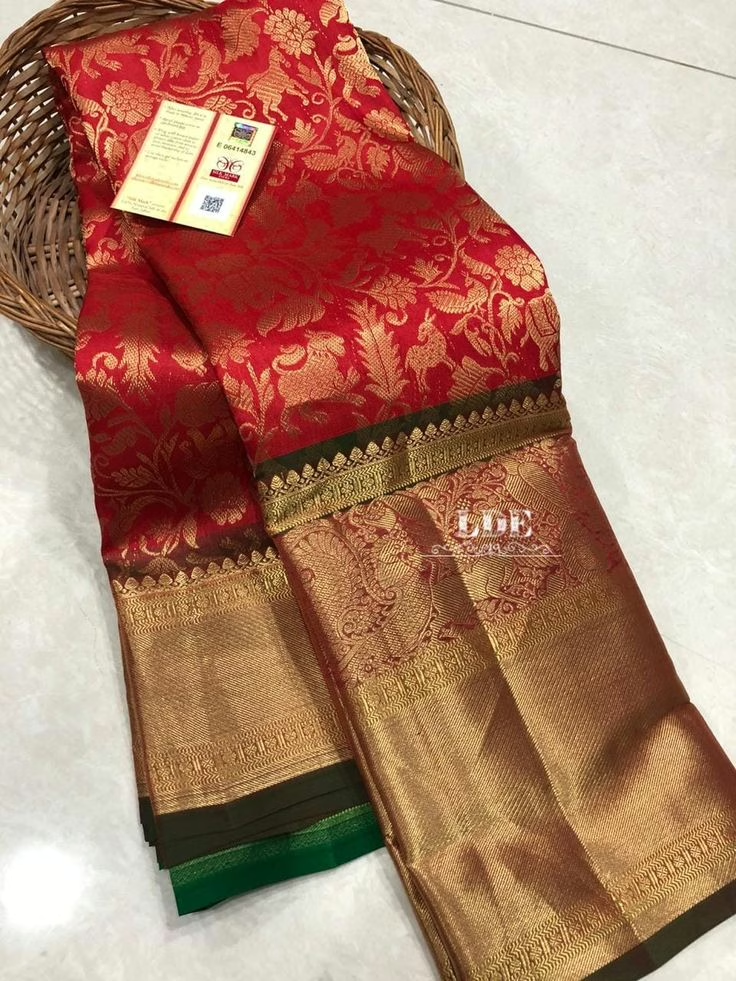
Photo Credits: Pinterest
Kanjeevaram sarees are heavy because of the thick silk. It uses the weft and the double warp technique making it heavier than blended or synthetic sarees. The fabric feels a bit coarse when you touch it but the fabric is rich in nature giving you the sheen and shine you deserve.
Fake Kanjeevaram sarees are light, soft and slippery. This is a sign of artificial or blended fabrics to make the saree.
4. Inspect the “Korvai” weave pattern
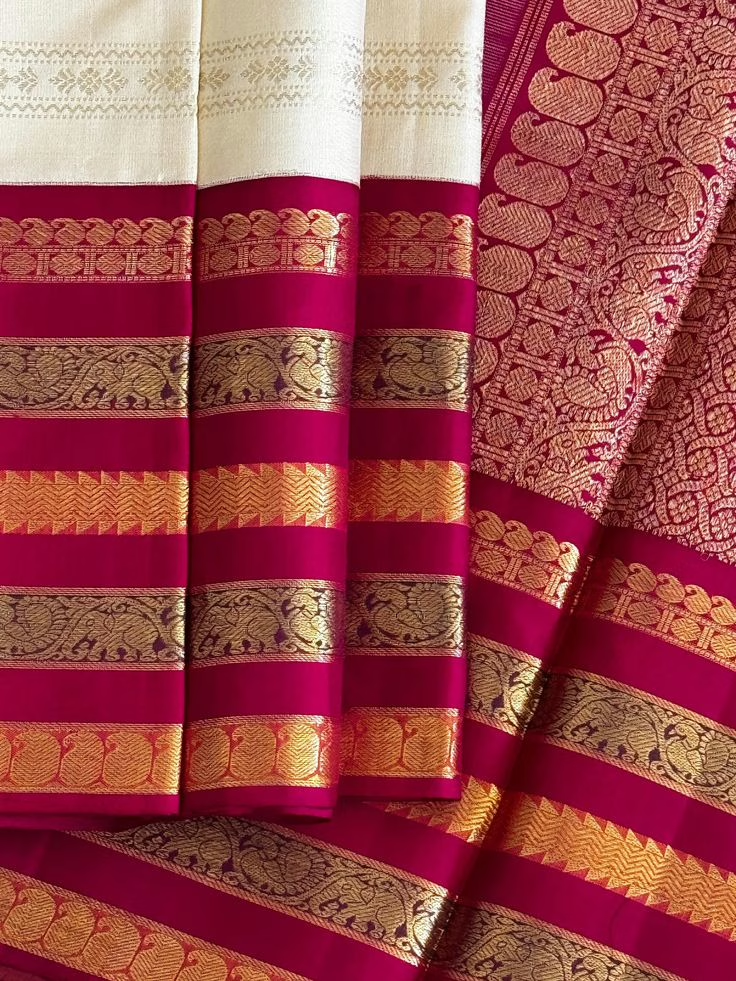
Photo Credits: Pinterest
If you look closely, you’ll find real Kanjeevaram sarees have their body and borders separately woven. They are subsequently interlocked with special zigzag patterns called the Korvai Technique. The weave is so meticulous that you won’t even notice the difference between the saree body and border. This joint is invisible and makes the saree more durable and definitely unique.
Check Test
Look for the spot where the saree border meets the body. If you see the design seamlessly merging into the fabric without stitches, it is handwoven. Fake sarees are usually made by machines so you can see printed borders and visible joints.
5. The shine and lustre test
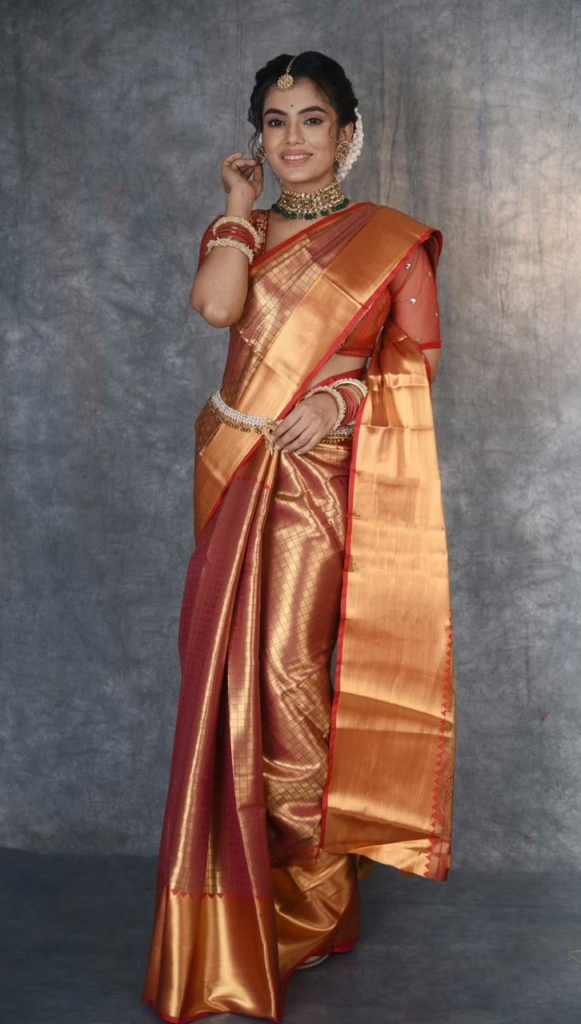
Photo Credits: Pinterest
Real Kanjeevaram silk sarees have a natural lustre that grabs the light perfectly. On tilting the saree under a light, you will find it changes color primarily because of its unique weaving technique using contrast color threads.
Fake sarees have an unnatural shine or a finish that looks too glossy. In light the saree seems like plastic when it suddenly catches the eye!
6. Taking the burn test (optional)

Photo Credits: Pinterest
If you already have an Kanjeevaram saree and wish to test its authenticity, this burn test will help. It is best done with a loose small thread from your saree. Note, this test is not recommended for a new purchase.
How to do the burn test?
Take a tealight candle and burn the silk thread from your saree. Real silk when burnt will smell like hair that is burned and turns into black ash. If the saree is a fake and the thread is burnt, it will smell like plastic and later becomes a solid hard black bead.
Caution: This test should be done carefully and only if you’re confident. Avoid doing this on valuable pieces.
Don’t let Kanjeevaram imitations fool you!
Owning a genuine Kanjeevaram saree is like having a piece of valuable heritage. These sarees are not just drapes but a symbol of timeless craftsmanship from India. By undertaking the steps listed above, you can ensure your saree is real and worth every rupee spent.
Last but not the least, if you are shopping for your Kanjeevaram saree online, ensure you meticulous read customer reviews, check the return policy, and verify the credential of the seller.



